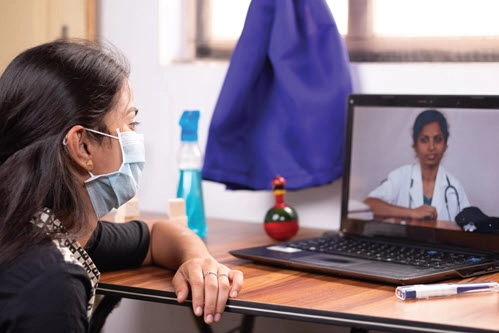Capture prolonged service pay and more for Medicare beneficiaries.
While you’re getting up to date on 2021 code changes, make sure you’ve mastered Healthcare Common Procedure Coding System (HCPCS) Level II coding that could impact your general surgery practice.
Why: HCPCS Level II codes “help providers of Medicare, Medicaid, and various third-party insurances get paid for services that are not covered by CPT® codes,” explains Catherine Brink, BS, CPC, CMM, president of Healthcare Resource Management in Spring Lake, N.J.
Here’s a look at the HCPCS Level II changes you can expect for 2021.
Understand HCPCS Level II Basics
Centers for Medicare and Medicaid Services (CMS) manages more than 15 different types of HCPCS Level II codes for conditions and services ranging from A codes for “Transportation, Medical & Surgical Supplies, Diagnostic and Therapeutic Radiopharmaceuticals” to V codes for “Vision/ Hearing Services.” The major 2021 changes to HCPCS Level II codes that you need to know involve G codes, “Temporary Procedures & Professional Services.” You will find over 250 changes, additions, and revisions in this category.
Tip: G Codes are for quality reporting and new services or billing concepts by CMS. In other words, you’ll use G codes when no CPT® code currently captures the information.

“As of January 1, Medicare recognizes 1,278 G HCPCS Level II codes,” says Melanie Witt, RN, CPC, MA, an independent coding expert based in Guadalupita, New Mexico. Seven of the new G codes are for physician services and are assigned relative value units (RVUs), meaning providers can bill and get paid for them.
Check Out for Changes to Office E/M Coding
Medicare won’t pay for CPT® prolonged service add-on code +99417 (Prolonged office or other outpatient evaluation and management service(s) beyond the minimum required time of the primary procedure which has been selected using total time, requiring total time with or without direct patient contact beyond the usual service, on the date of the primary service, each 15 minutes of total time (List separately in addition to codes 99205, 99215 for office or other outpatient Evaluation and Management services), instead providing the following code for that service:
Analysis: You should use G2212 for Medicare beneficiaries only in addition to level-five office/outpatient evaluation and management (E/M) services (99205 or 99215, Office or other outpatient visit …) for visits billed based on time that exceed 89 minutes for 99205 or 69 minutes for 99215. That differs from +99417, which you can bill when these codes hit one minute beyond the maximum in their time ranges (75 minutes for the new patient visit and 55 for the established). Unfortunately, the addition of G2212 means that your practice “will have to bill Medicare differently for prolonged office visits than [for] payers who follow CPT®,” says Kent Moore, senior strategist for physician payment at the American Academy of Family Physicians.
“Private payers’ policies on this service may differ, so it will be important to check whether +99417 or G2212 should be reported,” Witt says. The guidelines for G2212 are similar to CPT® code +99417, “except CMS made clarifications to the language in the code description, such as the terms ‘total time’ and ‘usual service,’” Witt says.
Virtual check in: You also have new code G2252 (Brief communication technology-based service, e.g. virtual check-in, by a physician or other qualified health care professional who can report evaluation and management services, provided to an established patient, not originating from a related e/m service provided within the previous 7 days nor leading to an e/m service or procedure within the next 24 hours or soonest available appointment; 11-20 minutes of medical discussion) for your surgeons’ services.

“The code is intended for situations when the acuity of a patient’s problem is not necessarily likely to warrant an in-person visit, but when additional time is needed to make an assessment,” says Witt. Although introduced as part of the COVID-19 Public Health Emergency (PHE), CMS has not announced if this will become a permanent telehealth service code.
Remember: CMS suspended payment for new code G2211 (Visit complexity inherent to evaluation and management associated with medical care services that serve as the continuing focal point for all needed health care services and/or with medical care services that are part of ongoing care related to a patient’s single, serious condition or a complex condition. (Add-on code, list separately in addition to office/outpatient evaluation and management visit, new or established)) for three years based on the Consolidated Appropriations Act of 2021 (CAA).
Master Changes to Chronic Care Management Coding
HCPCS Level II deletes the following code your surgeons may have used:
Analysis: CMS cut G2058 because CPT® 2021 added +99439 (Chronic care management services with the following required elements: multiple (two or more) chronic conditions expected to last at least 12 months, or until the death of the patient, chronic conditions place the patient at significant risk of death, acute exacerbation/decompensation, or functional decline, comprehensive care plan established, implemented, revised, or monitored; each additional 20 minutes of clinical staff time directed by a physician or other qualified health care professional, per calendar month (List separately in addition to code for primary procedure)). “Coders who used G2058 in 2020 will use +99439 in 2021,” Moore says.
Use +99439 as an add-on code with 99490 (Chronic care management services with the following required elements: multiple (two or more) chronic conditions expected to last at least 12 months, or until the death of the patient, chronic conditions place the patient at significant risk of death, acute exacerbation/decompensation, or functional decline, comprehensive care plan established, implemented, revised, or monitored; first 20 minutes of clinical staff time directed by a physician or other qualified health care professional, per calendar month) representing the primary service.
